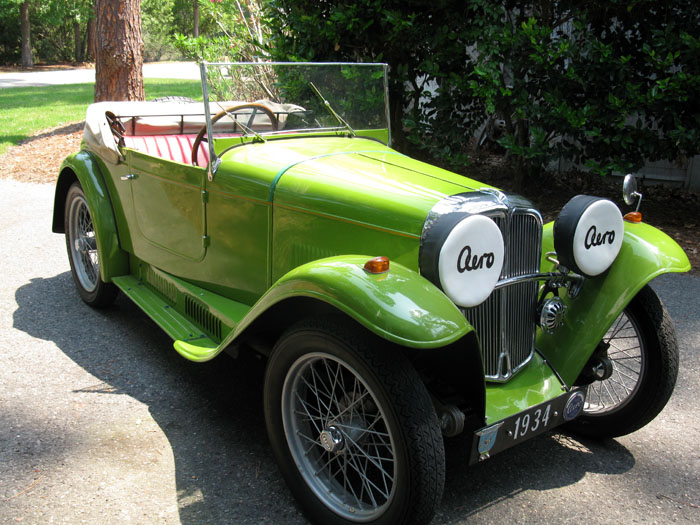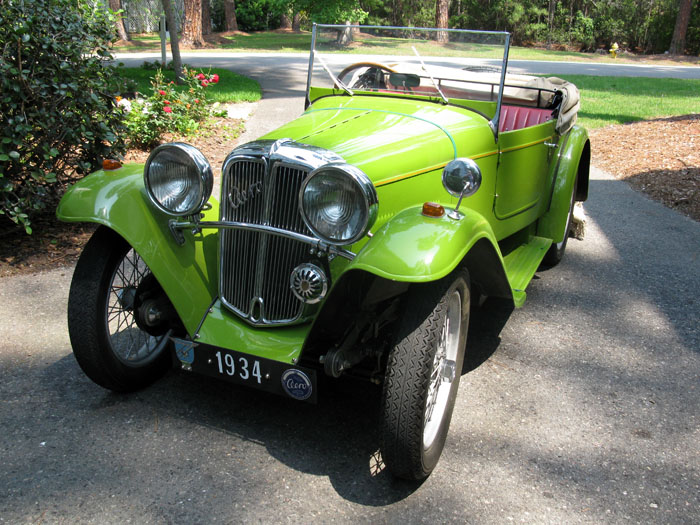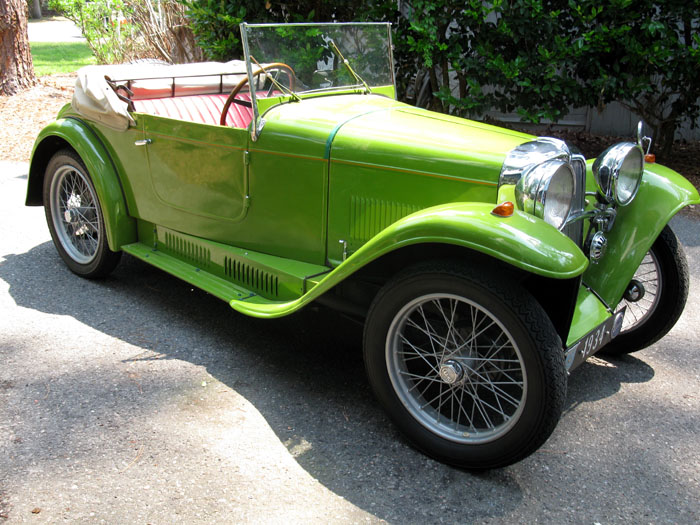Aero History by Geoff Wheatley
Aero History by Geoff Wheatley

1934 Aero: Image by Geoff Wheatley 2012
AERO Automobiles:
Czechoslovakia 1928 to 1939
By Geoff Wheatley
The original company produced aircraft engines and airplanes but their market declined as the world depression spread to Europe. In order to keep the company going a single cylinder Cycle Car prompted by the success of the British Baby Austin Seven, was produced in 1929. It is equally interesting to note that just two years earlier the now famous BMW Company was launched in Germany with a license to produce the same Austin Seven named the BMW Dixie. It is also interesting to note that both BMW and AERO were created through the WW 1 aircraft industry. One building engines the other aircraft.
By 1932 AERO had developed the Type 20 two cylinder motor car with a 662cc power unit. Two seats in the main body of the car and a rumble seat in the rear. The deluxe model incorporated both a clock, (Manual wind of course), and a luggage rack The car pictured in this article and owned by the author is the deluxe version of the Type 20, which was a reasonable success with about 2000 being sold between 1932 and 1934. One owner with the support of the Aero company drove his car from Moscow to Siberia and back in the winter as part of a marketing promotion while the car that this scribe now has was driven from Frankfort to Athens and back in the 1990’s as part of a European Aero Rally. (Not by me I hasten to say) However, the real success story was the Aero Type 30 introduced in the fall of 1934. This car was successful on international rallies that were very popular at that time, with a larger 998 cc power unit. The streamline design was in tune with the styling of that period introduced by the Italians who went on to dominate the European car design world for the next fifty years.

1934 Aero: Image by Geoff Wheatley 2012
Throughout the 1930s sales reached in excess of a 1000 cars a year with such sales being spearheaded by the front wheel drive Aero sports of 1936. Another feature was the use of an independent sprung platform frame with full mechanical breaks and friction dampers. Various other models were produced throughout the 1930s like the 1938 Type 50 with four cylinders and a very attractive drop head coupe styling, making AERO one of the largest Czech manufacturers in the pre war period. Cars were exported to France, Belgium, Hungary and Romania, throughout the 1930s. Production ceased with the outbreak of war in 1939 and little is known about the company during that period. However, in 1947 the company returned to producing cars, basically the same mechanical design as the original pre-war Aero 30/50 with a synchromesh gear box and a re styled body. In 1948 the government nationalized the company although production was limited due to various problems like a shortage of material and the continued use of two stroke power units in the small cars, a policy that seemed to be in favor throughout Eastern Europe in the post war years. The advance of competitor’s products eventually put the AERO Auto Company out of business and very few cars left the factory during this period.
Interestingly one of the several competitors was the Government owned Yugo Car Company, who managed to export their vehicles to Europe and North America in the 1970s where they proved that the West had nothing to worry about as far as Eastern European car production was concerned.

1934 Aero: Image by Geoff Wheatley 2012
The Aero Drivers Club based in Germany has approximately 180 Aero vehicles registered, the vast majority owned in Germany, Austria, or Czechoslovak. In the US there are examples of three different models in The Lane Museum in Nashville TN. under the heading "Unusual Cars of Europe".
To my knowledge and the records of the Aero Drivers Club these and the car I have represent the total number in North America. My car is the only one that is regularly driven.
Geoff Wheatley © 2012
P.S.
You may wonder why the steering wheel is on the right hand side. That was normal in Czechoslovakia until the German invasion when they were forced to drive on the left .
2012 Geoff Wheatley

